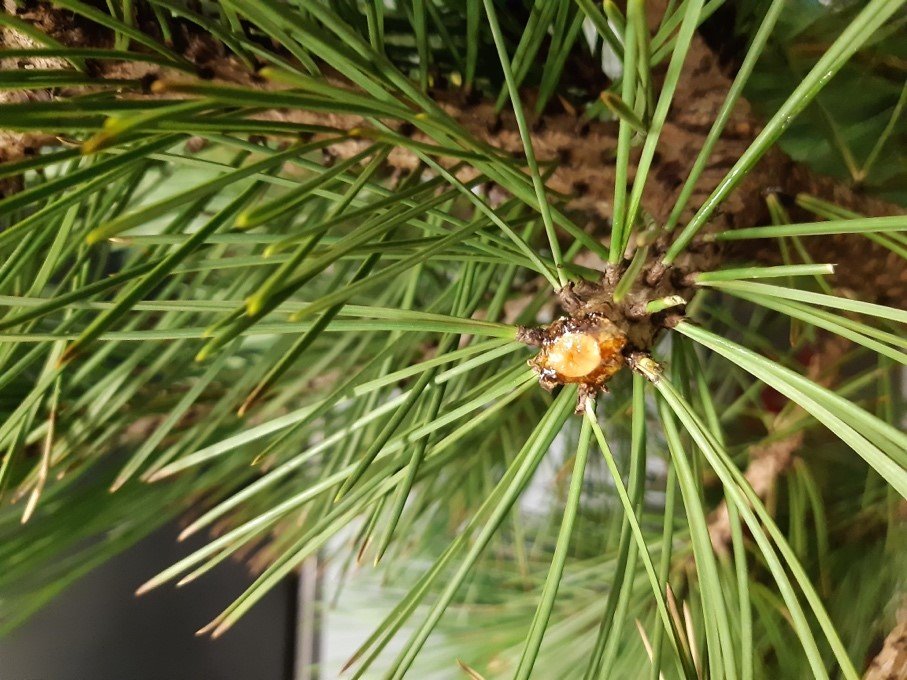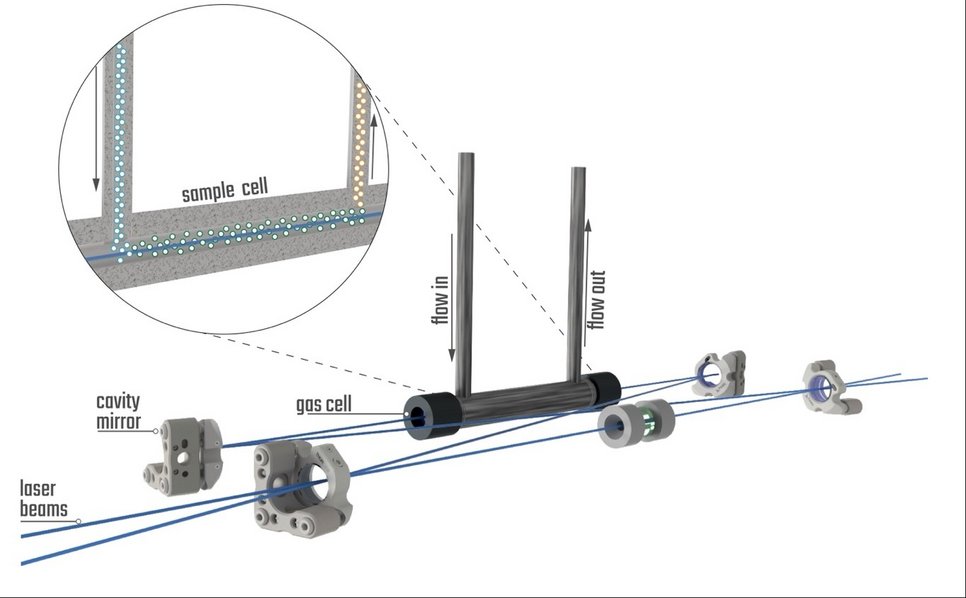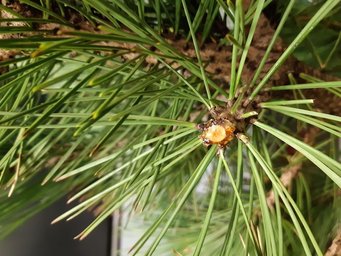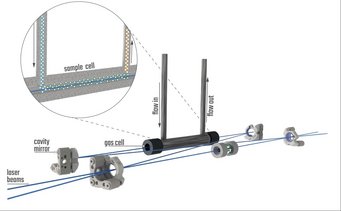Damaged plants and fake perfumes can be identified rapidly and reliably in real time
Researchers develop a highly sensitive novel technique capable of detecting chiral molecules within complex gas mixtures
JOINT PRESS RELEASE OF THE MAX PLANCK INSTITUTE FOR CHEMISTRY AND JOHANNES GUTENBERG UNIVERSITY MAINZ
The chiral signature of a fragrance can reveal whether a perfume is genuine or fake. Similarly, the chiral signature of the emissions of a plant can provide information on whether the plant is healthy or sick. Researchers at Johannes Gutenberg University Mainz (JGU) and the Max Planck Institute for Chemistry (MPIC) have developed an innovative approach capable of identifying and monitoring such chiral signatures. Most natural chiral substances are found in two mirror-image forms present in different relative quantities. Therefore, every plant and every perfume must have its own individual chiral hallmark. Using their new approach, the research team has been able, for the first time, to identify chiral compounds within complex mixtures of gases with a high level of sensitivity and in real time.

"Our new technique has enormous potential, specifically in agriculture and the chemical industry," said Dr. Lykourgos Bougas of JGU. Professor Jonathan Williams of MPIC added: "In addition to commercial applications, this technique will also make it possible for us to decode chiral signals in the air around us, enabling us to better understand the chemistry of the atmosphere." The cooperating partners have already applied for a patent for their technique.
Naturally occurring odors differ from synthetic ones
Chirality is a fundamental property of nature. Our right and left hands are a manifestation of this. Most importantly, several biomolecules exist in two mirror-image forms that are non-superimposable – in the same way that a right hand will not fit in a left-handed glove. This can affect the bio-chemical activity of these molecules. A unique example is the emissions of plants. These contain several chiral compounds that are naturally present in both chiral forms, the D- and L-isomers or enantiomers. A prominent example is the chiral molecule pinene, which is responsible for the characteristic scent of conifers and pines. The relative ratios of the two enantiomers of pinene naturally vary in the emissions of such plants, but critically depend on the state of health of the plant.
The same principle applies in the case of complex blends of natural and synthetic components, as in the case of perfumes. Any chiral ingredients will occur in both the D- and L-isomers but in differing relative quantities, depending on whether these originate from natural sources or from synthetic ones. As it is often the case that natural components are replaced by synthetic substances in fake/counterfeit perfumes, fake perfumes will have a chiral signature that differs from that of the originals.
Research under the aegis of the ULTRACHIRAL project funded by the European Union
The Mainz-based researchers have developed a cavity-enhanced polarimetric method for optical chiral analysis as part of the EU-sponsored ULTRACHIRAL project. They were able to detect the differing optical rotation effects of chiral molecules under polarized light. For this they transferred a sample of a plant or perfume scent to a small chamber which they exposed to polarized light. They then used a novel chirality-sensitive optical polarimeter to measure precisely and accurately the induced rotation of the polarized light. The researchers have been able to achieve a sensitivity that is better than that of the current state-of-the-art equipment by several orders of magnitude.

"Our new chiral-analysis approach provides us with precise results, faster and at better sensitivities than traditional techniques, without the need for any calibration before each measurement run. Additionally, our technique has been combined with gas chromatography for the first time to separate the individual components in a complex mixture. As a result, the chiral form of each constituent present in a complex blend of gases can be directly and accurately identified," explained JGU physicist Dr. Lykourgos Bougas, lead author of the paper that has recently been published in Science Advances. In their publication, the team of authors proposes a whole range of possible new applications for their detection method.
Among these is the quality control of perfumes, currently a particularly complex process as perfumes contain several hundreds or even thousands of different – natural and synthetic – compounds. To demonstrate the effectiveness of their technique, the researchers compared four authentic high-quality commercial perfumes with their low-cost counterfeits. The Mainz-based team was able to differentiate the high-quality original perfumes from their imitations on the basis of their chiral signatures with the help of a single rapid measurement.
Potential use in crop cultivation to monitor plant health and pest infestation
The technique might also be of considerable interest in the field of agriculture. Taking a young coniferous plant, the team was able to show that the chiral signature of the plant's emissions suddenly changed as soon as the plant was damaged. Similar chiral signatures have already been observed in plants subject to drought or disease. These signatures can be employed in practice, for example, to continuously monitor crop plants and trigger an alarm if these are infested by insects, suffer from a shortage of water, or become unhealthy.
The method may also assist in acquiring further insights into the physical and chemical processes that occur in our atmosphere. It is known that forests release vast quantities of volatile organic compounds (VOCs) into the environment, many of which are chiral. These molecules not only have an effect on the chemistry and physics of the air around us but also on our climate. VOCs can also be the precursor substances of secondary organic aerosols that influence the Earth's solar radiation budget. "We are still largely unaware of the role chirality plays in all these processes. In order to better understand this, we need new instruments and new approaches, such as that delivered by our research," concluded Bougas.
In order to enable the new method to be implemented in the various areas of application more easily, Dr. Lykourgos Bougas and Professor Jonathan Williams hope that a portable version of the device will be developed in future.

